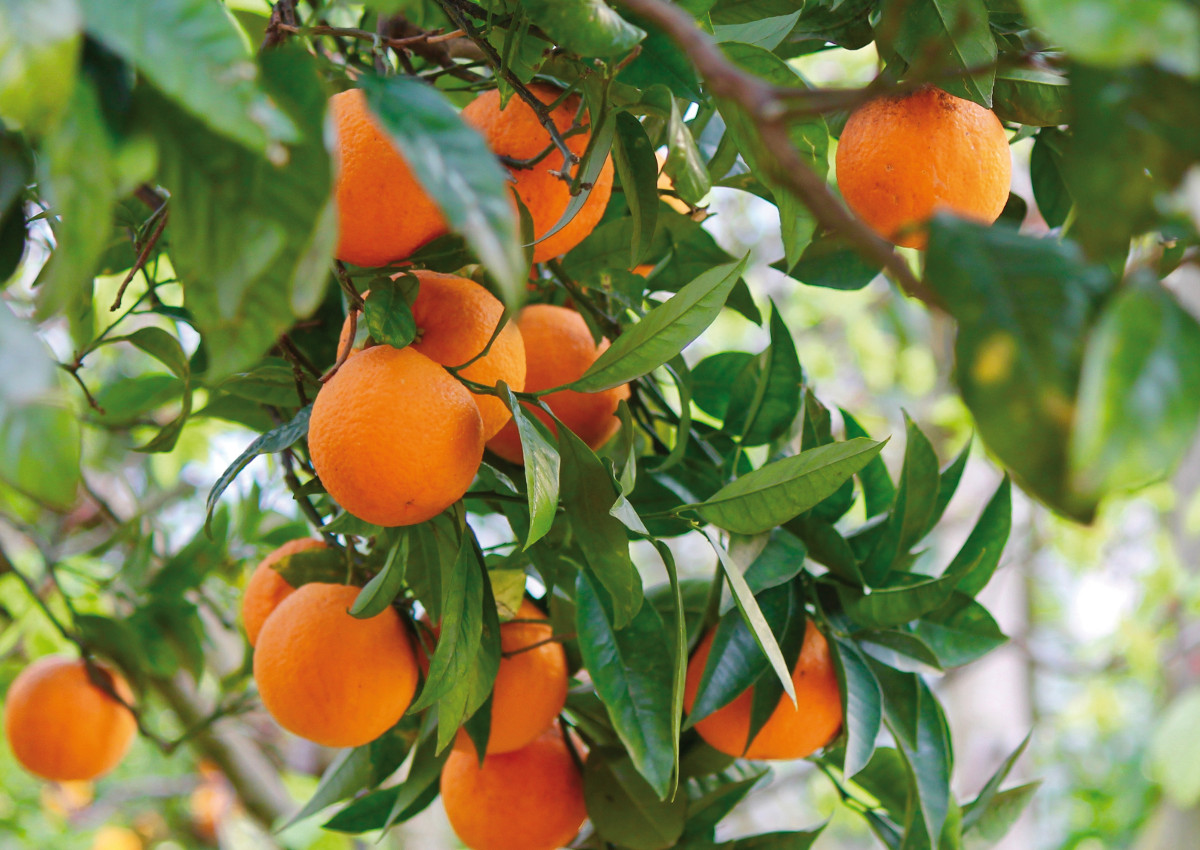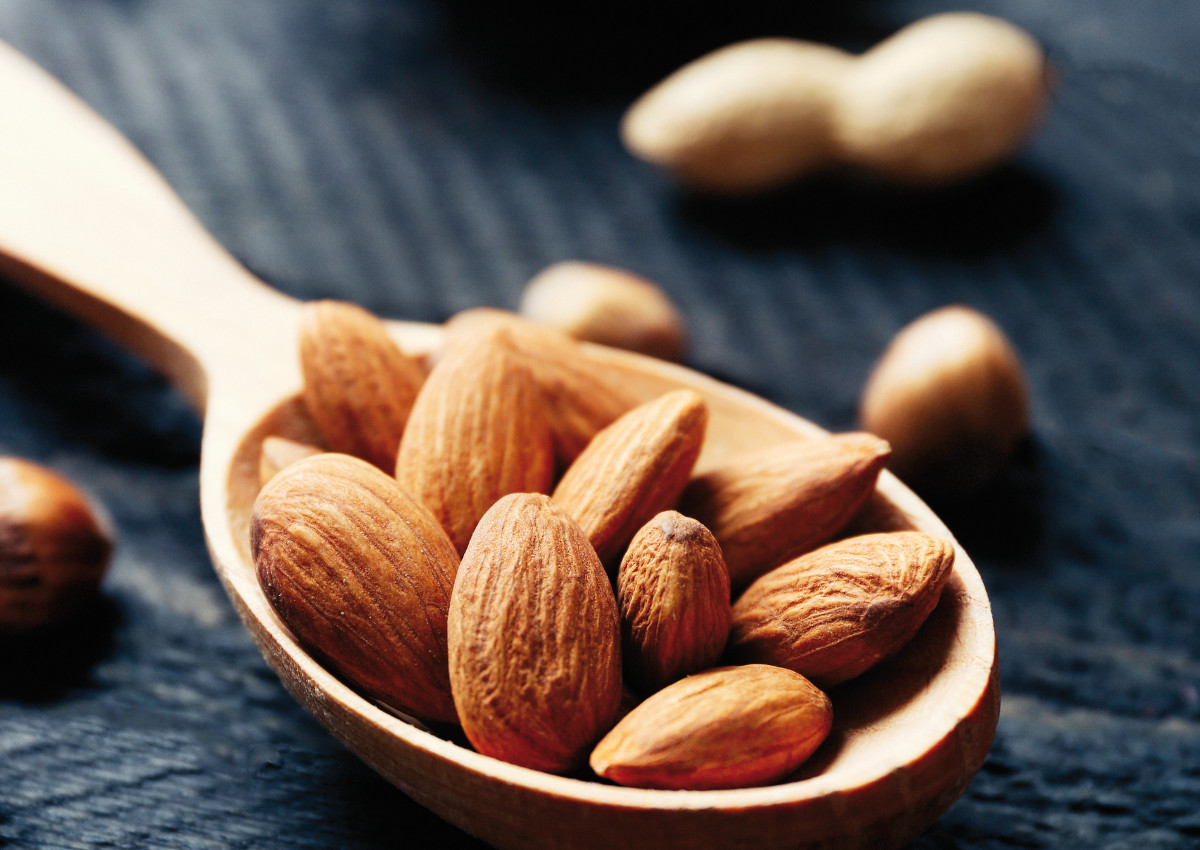
Thanks to its location, right in the centre of the Mediterranean Sea, Sicily has always been a crossroads of people and cultures, which have left their mark on the local food tradition: the local version of empanadas, ‘mpanate, a legacy of Spanish rule, or cous cous, quite common in the south of the island, even before the current ethnic food trend. In terms of agriculture, the local climate, as well as the presence of volcanic soils, favours the growth of distinctive products, which, in turn, have earned numerous Pgi and Pdo certifications. If we include the recent (2016) Evo Oil Pgi awarding, the region’s sector can now boast 30 (food) and 31 (wine) certifications.
The figures of the agri-food sector
This might be the reason why the agri-food sector plays a significant role in the regional economy. The exports of agricultural products have gone up 8.5% in the first nine months of 2016, while the agro-industrial sector recorded, in the same period, a +9.1%, compared to the general decline in exports of the sector. The EU market accounts for more than 60% of exports, with Germany and France in the lead, while the USA is the largest non-EU market. Oil, as well as both vegetable and animal fats, are the most exported food products, with a +11.9% and a +15% in 2016. Among the most exported products there are Pgi blood oranges, which in 2015 recorded an 115.8% growth in value and a +107.5% in volume, as well as the Pgi Pachino tomato, which, in the same period experienced a 4.1% growth in volumes of export, though with a 2.9% loss in value.

PDO and PGI supply chains
Though sometimes niche products, the fruit and vegetable sectors boast some of the most interesting offers such as the famous Pistachio of Bronte. Among the citrus fruit is the juicy and rich in essential oils Pgi Syracuse lemon, which is widely used fresh, or in pastries or for perfumes. The Pgi Interdonato Messina Lemon, one of the earliest lemon varieties of the season, features a particularly sweet taste, which is given by the low concentration of citric acid. Prickly pears are another typically Mediterranean product. Historically imported from the American continent, this succulent product has become a local fruit in the regions of southern Italy, where it now grows spontaneously. In Sicily, it has even earned two PDO certifications: Ficodindia dell’Etna (prickly pear of Mount Etna) and Ficodindia di San Cono, both coming from the area around the city of Catania. Recent studies have shown that prickly pears from Sicily have a high vitamin E content (in the seeds), which opens up a series of potential developments in the field of nutraceutics. The volcanic soil on the East Coast, expertly managed by the local farmers, is home to another interesting PDO, the Etna Cherry, which ripens in late June and July. Further south, towards Syracuse and Ragusa, there is even more fine fruit, such as Pgi Mazzarrone grapes, and vegetables, such as Pgi Novella di Ispica Carrots and the Pachino tomato in its Ciliegino, Grappolo, Costoluto and Tondo smooth varieties. In the heart of the region, Pgi Pesca di Leonforte, a certification that includes several varieties, both with yellow skin and late ripening ones. The west-central, southern side of the island, between the provinces of Caltanissetta and Agrigento, is home to the Pgi Canicattì grapes, while to the Northwest is the Pgi Peach of Bivona and the Pdo Ribera Orange. The Nocellara Olive grows along the Belice River. This product boasts two PDOs, one for the extra virgin olive oil (made from this cultivar), and another one for marinated table olives, which are used to make very peculiar cheese, the Belicino. Pantelleria, a volcanic islet a few miles from the coast of Africa, is home to the famous PGI Sicilian capers, which get their intense flavor from the volcanic soil and the dry climate typical of these latitudes.

Pgi Sicilian Blood Oranges
The eastern side of the island, the area between the provinces of Catania, Enna, and Syracuse, is the production area of the Pgi Blood Orange: the true rising star of Sicilian agriculture. In 2015, its production reached 15,315 tonnes (more than 3,000 tons were exported), with a +55.6% compared to the previous year. This PGI includes three varieties, Tarocco, Moro, and Sanguinello. The Tarocco (seedless) turns reddish as it matures. Sanguinello, as indicated by its name (blood-like in Italian), is reddish/blood in colour and very juicy. PGI Sicilian blood oranges can be found on the market both as fresh fruit, or in processed products, in particular as juices, candies, and in combination with almond milk. They make an excellent natural juice, or, alternatively, they are used as an ingredient in salads and sauces.
Pdo Green Bronte Pistachio
Almost all pistachio production areas in Italy are concentrated in Sicily, which produces around 3000 tonnes (Iran alone produces about 400,000 tonnes), a figure that has not grown for over 50 years. Most of the production is concentrated around the town of Bronte, on the slopes of Mount Etna. The homonymy with the famous sisters of the English literature may not be a coincidence as the name seems to be a tribute to Admiral Nelson, Duke of Bronte. Perched on steep terrain, the Pistacia Vera trees bear fruits that are harvested by hand every two years, and then deprived of the husk and left to dry in the sun. The Pdo Green Pistachio of Bronte features a distinctive deep purple skin and a contrasting strong green inside. The difficult harvesting and the various processing phases (mostly manual), in addition to the small area of production allow only small amounts of product (compared to other countries) to get to the market. Moreover, to improve the quality of the fruit, plants are harvested only on odd-numbered years. Pistachio is particularly popular as an ingredient in ice cream and in top-end catering.

Chocolate of Modica
In June 2017, the Italian Ministry of Agriculture, Food and Forestry Policy sent the European Union a request for the PGI recognition (expected soon) of the Chocolate of Modica. Modica is a town in the province of Ragusa, in southern Sicily. Even today, Modica’s chocolate is produced by artisans. What makes it different is its opaque and grainy texture, which is given by processing typical of this area and few other places around the world. This particular type of chocolate does not undergo conching (melting process). The cocoa paste and butter are melted at temperatures below 50° C and mixed with sugar, without the addition of any other fats. Only in recent years, chocolate of Modica has crossed the regional borders to be marketed in the rest of Italy.
Almond of Avola
In Sicily, almonds are deeply rooted in the food culture, especially when it comes to pastry. This fruit, a key ingredient of marzipan sweets and traditional sugared almonds, is widely used in granitas and ice creams, as well as to make almond milk. Its finest cultivars are those included in the Almond of Avola certifications, named after the town located in the province of Syracuse. The most prestigious among these cultivars is the Pizzuta, as well as the Fascionello and Romana. A further application for a PGI was made for the Almond of Avola. Many producers hope this addition will give further momentum to a very promising production.
Sicilian Pdo and Pgi extra virgin olive oil
To date, the confirmed Sicilian olive cultivars are 30, with 8 taking up entire production areas. In 2016, the Sicily Pgi was registered. It includes the oil produced in the entire region. This regional new entry is an addition to the Pdos of specific locations, which feature specific organoleptic characteristics: Mount Etna, Iblei Mountains, Val di Mazara, Valle del Belice, Valdemone, and Trapani’s valleys. The 2016/2017 season was unfortunately a disaster for the Italian EVO olive oil, as it was down 62% from the previous year. Some recovery is expected in the 2017/2018 season, as Sicily is one of the regions that fared better with the heavy summer drought. Also in 2017, Sicily will be in third place, after Apulia and Calabria, for quantity produced, which is estimated at around 29,900 tonnes, well below 2015, when it exceeded 52,000 tonnes. On average, 10% of Sicilian bottled oil is exported. The new PGI is expected to help this figure grow.
The dairy sector
In the cheese segment, one of the oldest and traditional products is PDO Sicilian Pecorino. Produced throughout the region, its surface retains the characteristic shape of the baskets in which the product is left to rest. Its flavour is slightly spicy, rich, and varied, as the sheep are raised in open pastures with the grass that is typical of the area. Pdo Piacentinu Ennese is also made with local sheep’s milk. Saffron is first added to the milk and, after the breaking of the curd, black peppercorns. Its colour is a strong yellow, punctuated by peppercorns. Pdo Vastedda della Valle del Belice is a rare example of stretched curd cheese made from sheep’s milk. Of a white ivory colour, its tastes is sweet and slightly tart, slightly like yogurt. Also in this case, the sheep are local. Ragusano Pdo, another stretched curd cheese made from cow’s milk, features a characteristic box shape. It requires from 3 to 12 months of maturing. The longer the maturing the spicier the Ragusano.

Confectionery and bakery products
For Italians, Sicilian cuisine is associated with desserts, from cannoli with ricotta to cakes with almonds, from slush to cassata, and marshmallows. Sicilian pastry is both popular and refined. Largely influenced by the Arab presence on the island, the local confectionery focuses on aesthetics. A good example is the “marzipan fruits”; pastries made with almond flour and sugar, shaped to look strikingly similar to fruit, vegetables, and animals. Also in the bakery segment, Sicily has its own identity. Bread is usually made of durum wheat, and often sprinkled with sesame seeds. This area features the Pdo Dittaino loaf, durum wheat semolina obtained from the local variety, which stays fresh and fragrant for several days.
Sicilian wines
Given the richness of Sicilian cuisine, there are many excellent wines, with24 Pdos and 7 Pgis. The most famous is Nero d’Avola, used in many wines. Among the most significant denominations are Docg Cerasuolo di Vittoria, a strong wine produced in the south east of Sicily, and the Passito di Pantelleria (made from 100% Zibibbo grapes), which is produced only on the island from which it takes its name. There is also Marsala wine liquor, which takes on additional names depending on the color and aging period. For example, Marsala Vergine and/or Soleras Riservarequires a minimum aging of at least 10 years.
